Philippine banana, particularly the iconic Cavendish variety, are celebrated worldwide for their exceptional sweetness, creamy texture, and vibrant yellow appearance. Grown in the fertile soils of Mindanao and other tropical regions, these bananas benefit from the Philippines’ ideal climate, ensuring consistent quality and flavor. As one of the largest banana exporters globally, the Philippines has earned a reputation for delivering fresh, high-quality produce that meets international standards. Whether you’re a retailer looking to stock premium fruit or a consumer seeking nutritious options, Philippine bananas offer unmatched value. With their affordability, long shelf life, and widespread appeal, it’s no wonder they’re a favorite among international buyers. Let’s explore why Philippine bananas stand out on the global stage!
Why Philippine Banana Are a Top Choice for International Buyers
Philippine banana have become a top choice for international buyers, and here’s why:
First, the Philippines boasts world-class farming practices and strict quality control measures. Farmers use sustainable techniques to grow bananas that are not only delicious but also safe and eco-friendly. This commitment to excellence ensures that every bunch meets global food safety standards, giving buyers peace of mind.
Additionally, Philippine banana are known for their year-round availability and competitive pricing. The country’s robust export infrastructure allows for efficient harvesting, packing, and shipping, ensuring the bananas arrive fresh and ripe.
Finally, the Cavendish variety’s universal appeal—sweet, creamy, and versatile—makes it a hit in markets worldwide. Whether enjoyed as a snack, used in desserts, or incorporated into smoothies, Philippine banana cater to diverse tastes and preferences.
Also Read : Top Reasons Why 8 Vietnamese Mangoes Are Perfect for Your Import Business
12 Most Popular Banana Varieties from the Philippines
1. Lakatan

The Lakatan banana , a true gem from the Philippines, stands out as a premium variety cherished for its exceptional sweetness and creamy texture. Unlike the more common Cavendish, Lakatan bananas are smaller but pack a flavorful punch, making them a favorite for desserts, snacks, and even traditional Filipino dishes. What truly sets them apart is their natural aroma and vibrant yellow skin, which signals their ripeness and quality. Grown primarily in regions like Mindanao, these bananas thrive in the Philippines’ tropical climate, ensuring they’re always fresh and bursting with flavor. Moreover, Lakatan bananas appeal not only to local consumers but also to international buyers seeking unique, high-quality fruit options. With their rich taste and cultural significance, Lakatan bananas are more than just a treat—they’re a celebration of Philippine agriculture and heritage.
2. Latundan
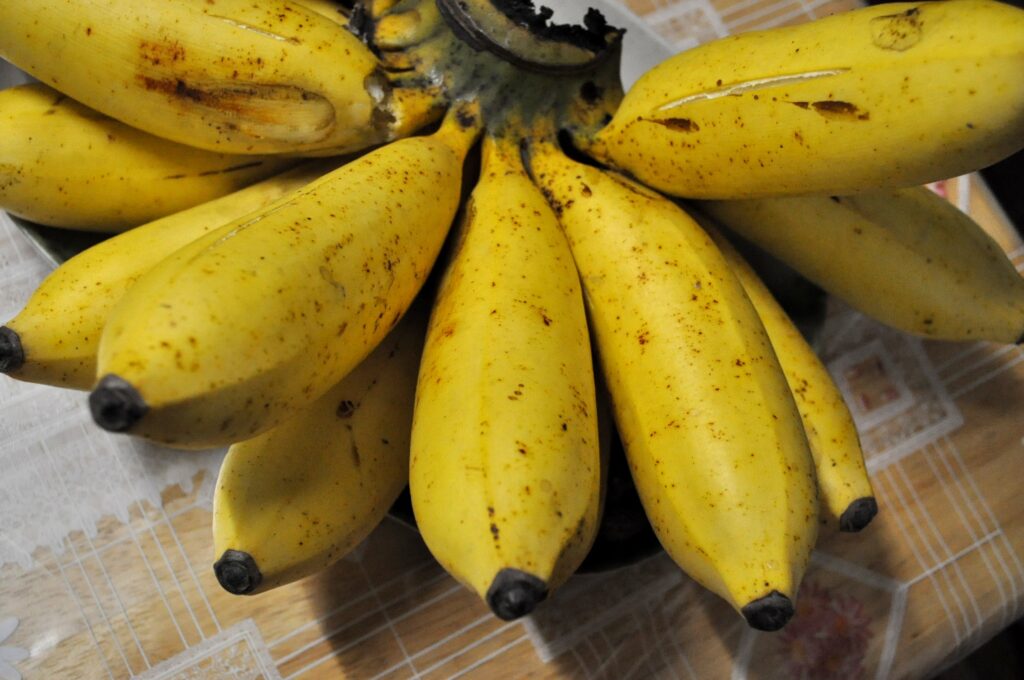
The Latundan banana , also known as the “silk banana,” is a true all-rounder. This medium-sized fruit delights with its creamy texture and subtle tanginess. Its tender flesh makes it perfect for both fresh consumption and cooking. People love frying Latundan into crispy chips or using it in desserts. What’s more, its durability during transport ensures it stays fresh over long distances. Widely grown in the Philippines, Latundan bananas benefit from the country’s tropical climate, which enhances their flavor and quality. With their versatility and rich taste, Latundan bananas are a must-try for anyone seeking something unique and flavorful.
3. Saba

The Saba banana is a true star in the Philippines, known for its versatility and bold flavor. Unlike regular sweet bananas, Saba bananas are shorter, thicker, and starchier, making them perfect for both savory dishes and sweet treats. When cooked, they transform into a creamy, slightly sweet delight that’s simply irresistible. Filipinos love using Saba bananas in traditional recipes like banana cue , halo-halo , or even grilled as a snack. They’re also a key ingredient in Filipino desserts like ginataang bilo-bilo and turon .
4. Señorita

The Señorita banana is a standout variety that offers a refreshingly different taste compared to the more common Cavendish. Smaller in size and with a distinct tangy-sweet flavor, this banana feels like a delightful surprise for your palate. Its thin skin and firm texture make it perfect for enjoying fresh, and its unique taste adds a special twist to fruit salads or snacks. What truly sets the Señorita banana apart is its natural resistance to pests and diseases, making it a sustainable choice for farmers in the Philippines.
5. Cavendish
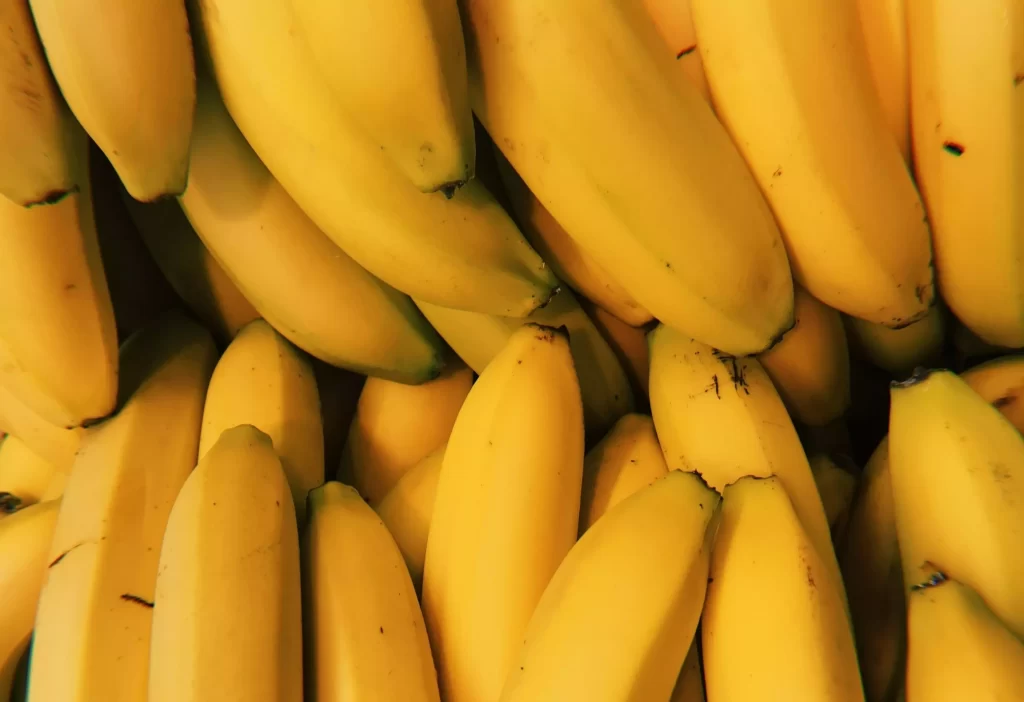
The Cavendish banana , the world’s most popular banana variety, has found a special home in the Philippines. Known for its creamy texture, mild sweetness, and vibrant yellow peel, the Cavendish is a staple in households and markets worldwide. Philippine-grown Cavendish bananas stand out due to the country’s ideal tropical climate and rich volcanic soil, which enhance their flavor and quality.
What makes Philippine Cavendish bananas so appealing is their consistent size, long shelf life, and year-round availability. These qualities make them perfect for both fresh consumption and use in smoothies, desserts, or snacks. Additionally, Filipino farmers employ sustainable farming practices, ensuring their produce meets international standards while remaining eco-friendly.
6. Langkitan

The Lagkitan banana , commonly found in the Southern Tagalog region, is a versatile fruit that can be enjoyed raw or cooked. It has a pale yellow hue similar to Saba but features a shape akin to Latundan—rounded near the stem and tapering at the tip. The Lagkitan’s flavor strikes a delightful balance between the two, combining the firmness of Saba with the thin skin of Latundan. Occasionally, you might even find small seeds in the center of the fruit, adding a unique characteristic. Its taste is both sweet and tangy, with a subtle gum-like undertone that enhances its appeal. The texture is sticky and smooth, yet it contains less starch compared to Latundan, making it a standout choice for those seeking something distinctively flavorful and satisfying. Whether eaten fresh or incorporated into dishes, Lagkitan offers a truly unique tropical experience!
7. Bulkan
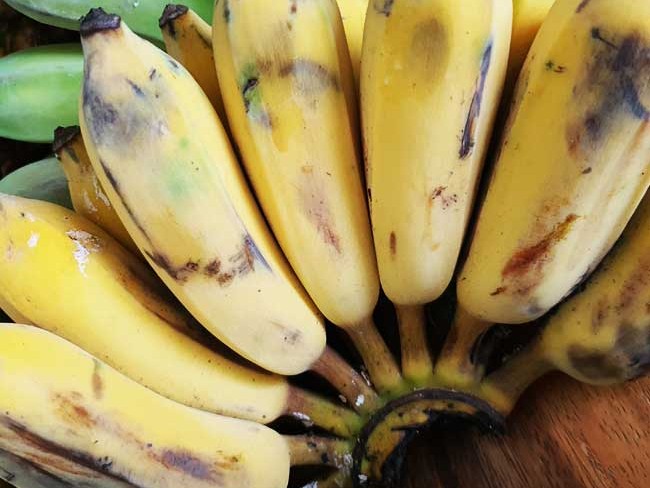
The Bulkan banana , often considered a rare and exotic variety, is a true hidden gem in the world of tropical fruits. Native to the Philippines, this banana stands out with its unique appearance—shorter and stubbier than most varieties—and its vibrant yellow skin that hints at its rich flavor. What makes Bulkan bananas truly special is their texture and taste: firm yet creamy, with a delightful balance of sweetness and subtle tanginess. They’re perfect for enjoying fresh or incorporating into both sweet and savory dishes.
Grown primarily in volcanic regions, Bulkan bananas benefit from nutrient-rich soil, which enhances their flavor and quality. Their thick skin not only protects the fruit but also makes them highly durable during transport, ensuring they arrive fresh and intact. With their distinct taste, firm texture, and cultural charm, Bulkan bananas are a must-try for anyone looking to explore the diverse flavors of Filipino agriculture. If you’re searching for something unique and unforgettable, the Bulkan banana is sure to impress!
8. Morado

If you’re looking for a banana variety that stands out from the crowd, Morado is sure to catch your eye—and your taste buds. This striking red-skinned banana may be rare in Metro areas, but it thrives in regions like Mindoro and Baguio, where locals have embraced its uniqueness. Larger than most varieties, Morado takes its time to ripen, building anticipation for the delightful experience it offers.
Once you peel back its thick, reddish-purple skin—often requiring a knife due to its toughness—you’ll uncover a pale-yellow interior that’s as inviting as it is intriguing. As the fruit ripens, its peel transforms into a warm orange-yellow hue, signaling it’s ready to enjoy.
9. Inabiniko
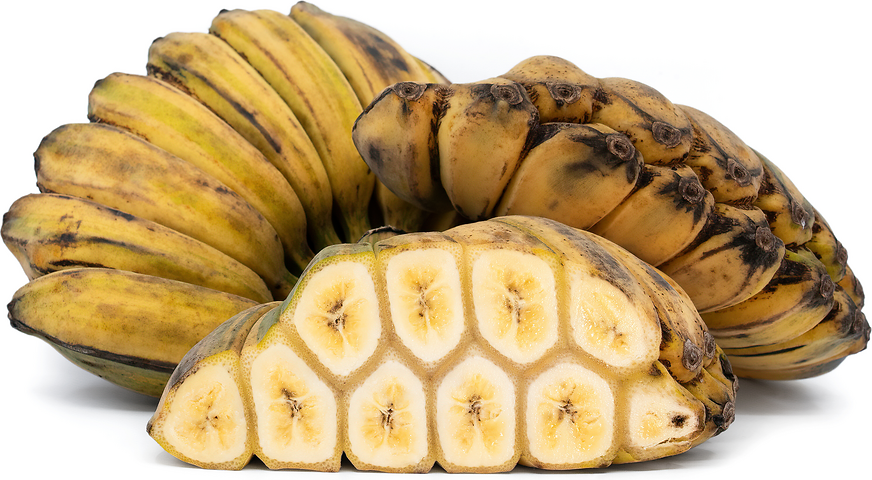
Inabaniko is a truly distinctive banana variety, instantly recognizable by its clusters of tightly packed “fingers” that resemble a closed human fist. This rustic fruit offers a tangy flavor reminiscent of Saba, but with an added earthy, grassy depth that sets it apart. Some sources even suggest a hint of vanilla-like notes, though this can vary depending on ripeness and preparation. When it comes to texture, Inabaniko mirrors Saba’s firm and chewy consistency, making it a hearty, almost “meaty” option for cooking. Boiling it reveals a starchy, potato-like quality, with less sweetness than Saba, making it ideal for savory dishes or recipes that need a robust, filling ingredient. Whether you’re exploring traditional Filipino cuisine or experimenting with new flavors, Inabaniko brings a unique twist that’s both satisfying and memorable.
10. Bungulan

If you’re searching for a banana that stands out visually, Bungulan is a true gem. This unique variety starts green and stays green—even when fully ripe—though you might notice a subtle yellowish tint around the tips as it matures. Known for its versatility, Bungulan is often hailed as the perfect choice for baking banana cakes, a claim we’ll happily trust despite not testing it ourselves. When it comes to flavor, Bungulan truly shines with a delightful balance of sweetness, tanginess, and creaminess, much like Lakatan. However, it also surprises your taste buds with hints of melon-like freshness and even a playful bubblegum-y note that adds a fun twist.
11. Utungan

While Utungan and Saba bananas share some similarities, they’re far from identical in taste and texture. Utungan offers a lighter, sweeter flavor with a subtle tanginess that’s less pronounced than Saba’s robust, starchy profile. Unlike Saba, which leans more savory and potato-like when cooked, Utungan retains a creamy sweetness that makes it versatile for both fresh eating and cooking. Additionally, Utungan’s texture is softer and less dense than Saba’s firm, meaty flesh, making it a better fit for recipes that require a smoother consistency, like smoothies or banana-based desserts. So, while both bananas bring their own charm to the table, Utungan stands out as a lighter, more refreshing alternative to the hearty richness of Saba.
12. Tindok
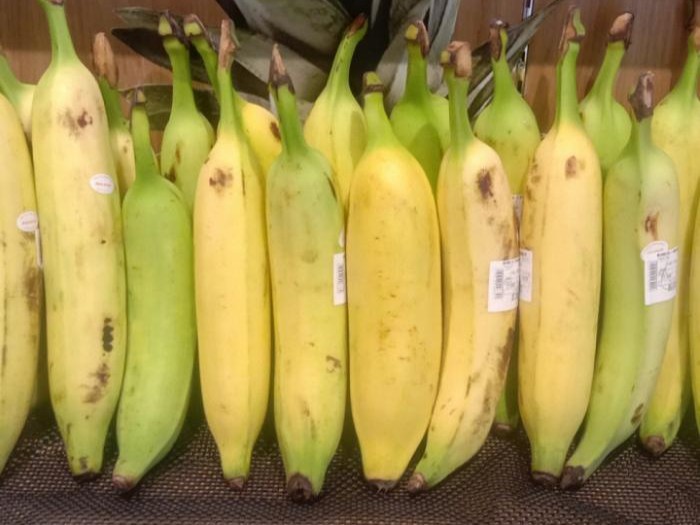
Tindok is often hailed as the most popular variety of the beloved Pisang Raja in the Philippines, and for good reason. This banana variety boasts large, elongated fruits with a distinctive pointed tip that sets it apart visually. When it comes to flavor, Tindok strikes a perfect balance between sweetness and sharpness, offering a taste that’s reminiscent of both Lakatan and Señorita bananas. While still green, it carries a subtle vegetal aroma, but as it ripens, its sweetness deepens, making it a versatile choice for both fresh eating and cooking. When cooked while green, Tindok transforms into a dense, potato-like texture with tightly packed fibers, ideal for savory dishes. On the other hand, when fully ripe, its waxy, deep orange flesh becomes chewy yet soft, similar to Lakatan but with a denser, more satisfying bite.
Also Read : Top 8 Best Vietnam Avocados for Your Import Business!
How to Successfully Import Philippine Banana: A Step-by-Step Guide
1. Know Your Market Demand
Before diving into importing Philippine bananas, take the time to thoroughly research and understand your target market’s needs. Are consumers in your region drawn to specific varieties like sweet Lakatan or versatile Saba? Analyzing demand trends will help you identify which bananas are most likely to sell well, ensuring your imports align with customer preferences. Additionally, consider seasonal variations and how Philippine bananas can fill gaps in the market. By understanding your audience’s tastes and expectations, you can make informed decisions that maximize sales potential and minimize risks. This step not only boosts your business strategy but also positions you as a reliable supplier of high-quality tropical fruits.
2. Choose Certified Exporters
Partnering with certified exporters is crucial to guaranteeing the quality and safety of your Philippine bananas. These exporters adhere to international food safety standards, ensuring that the bananas you import are fresh, free from contaminants, and handled properly throughout the supply chain. Start by verifying certifications and requesting product samples to assess flavor, texture, and overall condition. Building strong relationships with trusted suppliers also ensures consistent quality and timely deliveries, giving you peace of mind while expanding your business. By working with reputable exporters, you not only protect your brand reputation but also deliver products that meet or exceed customer expectations every time.
3. Optimize Logistics
Efficient logistics play a vital role in maintaining the freshness and quality of Philippine bananas during transit. Use cold chain solutions to preserve their flavor, aroma, and texture, especially for long-distance shipments. Partner with experienced freight forwarders who specialize in perishable goods to ensure smooth transportation and minimize delays. Track your shipments closely to address any issues proactively, such as temperature fluctuations or transit disruptions. Properly optimized logistics not only reduce spoilage but also enhance customer satisfaction by delivering bananas in perfect condition. With careful planning, you can ensure your products arrive on time and ready to impress buyers.
4. Understand Import Regulations
Navigating import regulations is essential to avoiding costly delays and ensuring compliance with local laws. Familiarize yourself with customs duties, phytosanitary requirements, and labeling standards specific to your country. For instance, some regions may require certificates proving the bananas are free from pests or diseases. If this feels overwhelming, consult a customs broker or leverage platforms like AsiaCommerce to simplify the process. Staying informed about these regulations ensures your shipments clear customs smoothly and reach their destination without unnecessary hurdles. By prioritizing compliance, you build trust with both authorities and customers, paving the way for long-term success.
5. Consider Working with a Trade Facilitator
Importing Philippine banana involves multiple moving parts, from sourcing suppliers to managing customs clearance and logistics. To streamline this complex process, consider working with a trade facilitator like AsiaCommerce. These experts handle everything—from connecting you with certified exporters to optimizing shipping routes and ensuring regulatory compliance—so you can focus on growing your business. They also provide transparent cost calculations, eliminating hidden fees and unexpected expenses. With their support, you gain access to end-to-end solutions tailored to your needs, making the entire import journey seamless and stress-free. Partnering with a trade facilitator not only saves time but also enhances efficiency, allowing you to scale your operations confidently.
Simplify Your Philippine Banana Import Journey with AsiaCommerce!
Ready to bring the vibrant flavors of Philippine banana to your market? Let AsiaCommerce take the hassle out of importing! From connecting you with certified exporters and ensuring compliance with import regulations to optimizing logistics and handling customs clearance, we provide end-to-end solutions tailored to your business needs.
With AsiaCommerce by your side, you can focus on what matters most—growing your business—while we handle the complexities of international trade. Our transparent pricing, expert guidance, and reliable network ensure your bananas arrive fresh, on time, and ready to delight your customers.
Click here to schedule a free consultation and discover how AsiaCommerce can help you effortlessly tap into the booming demand for high-quality Philippine bananas. Together, let’s make your import business thrive!

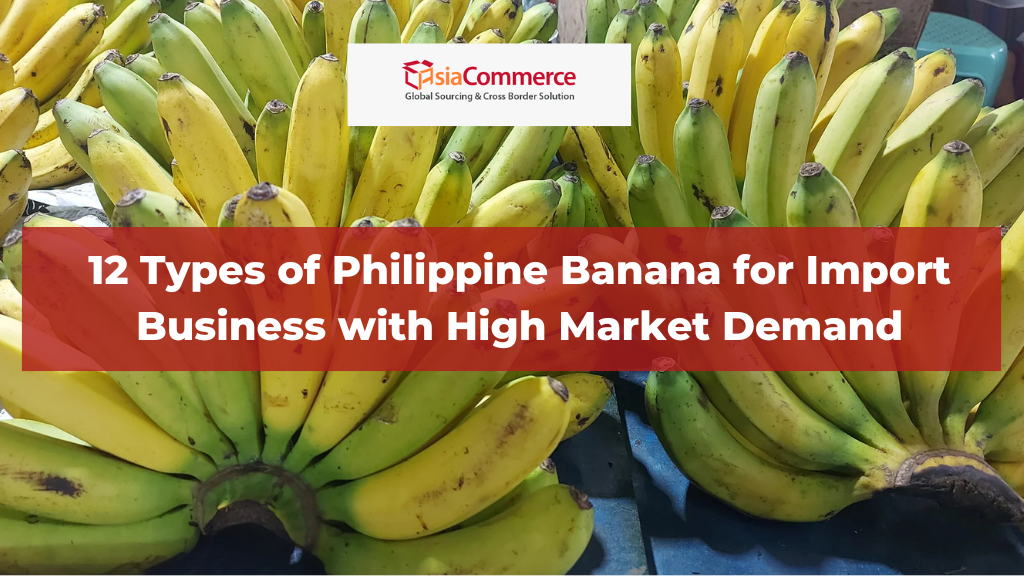
0 Comments